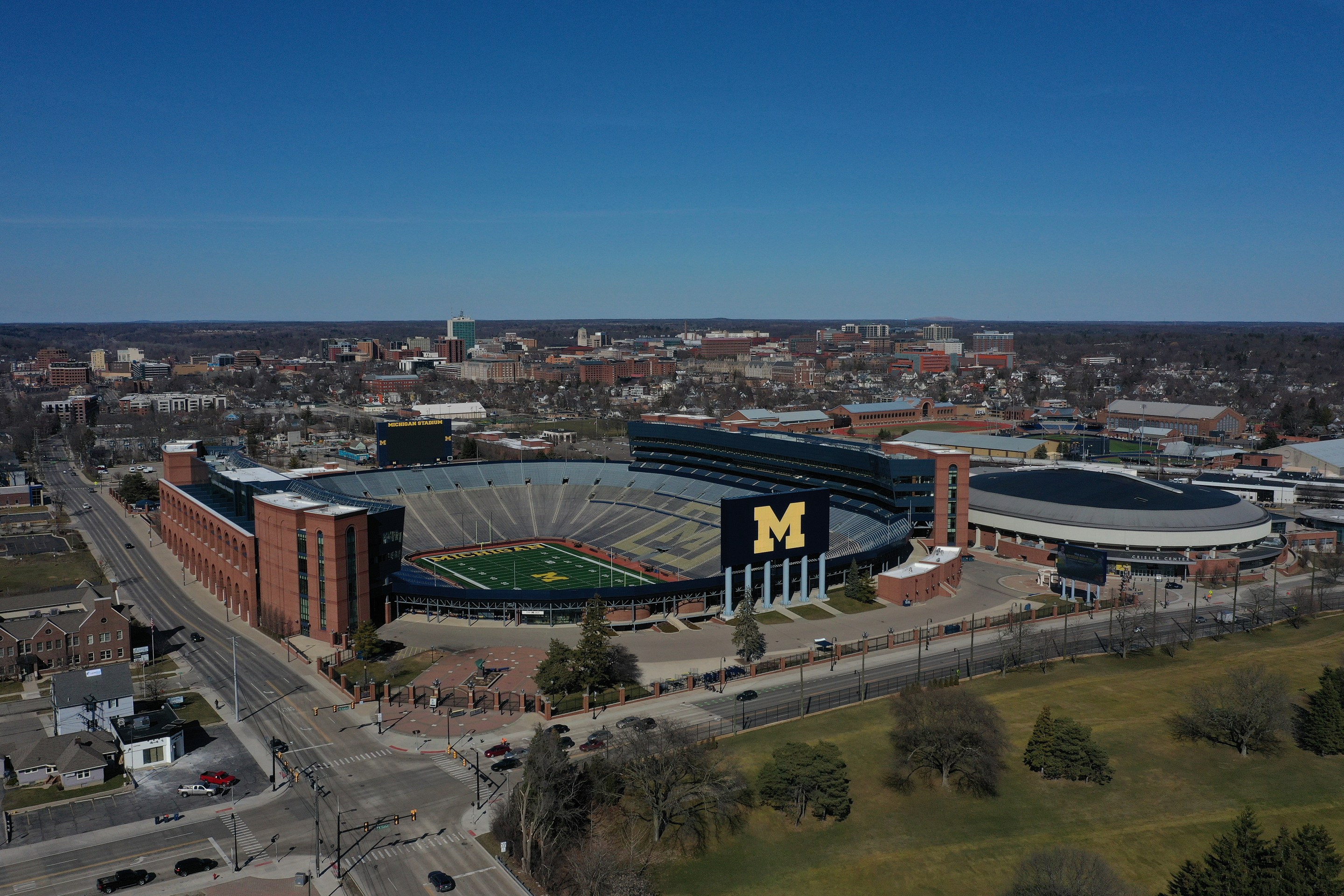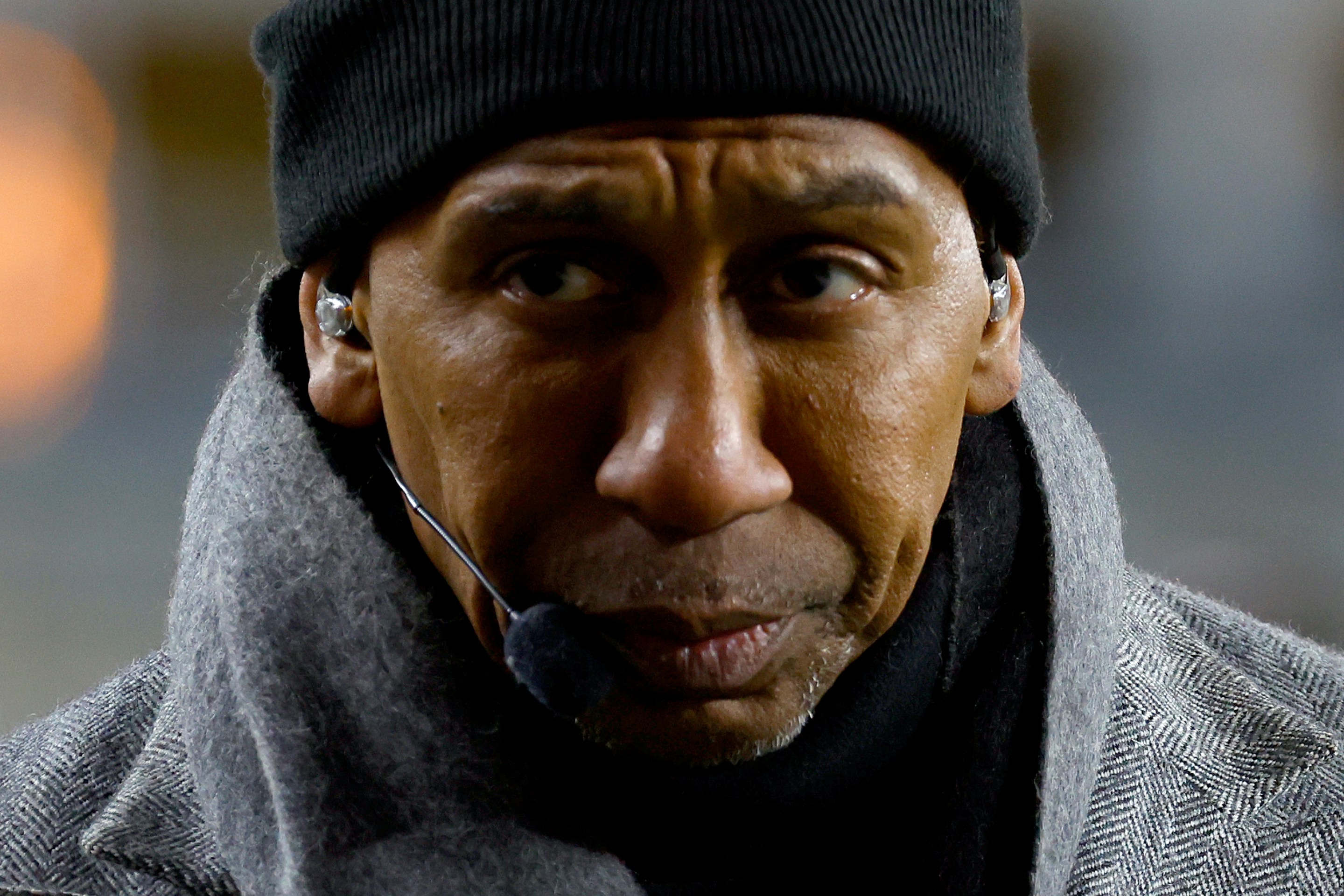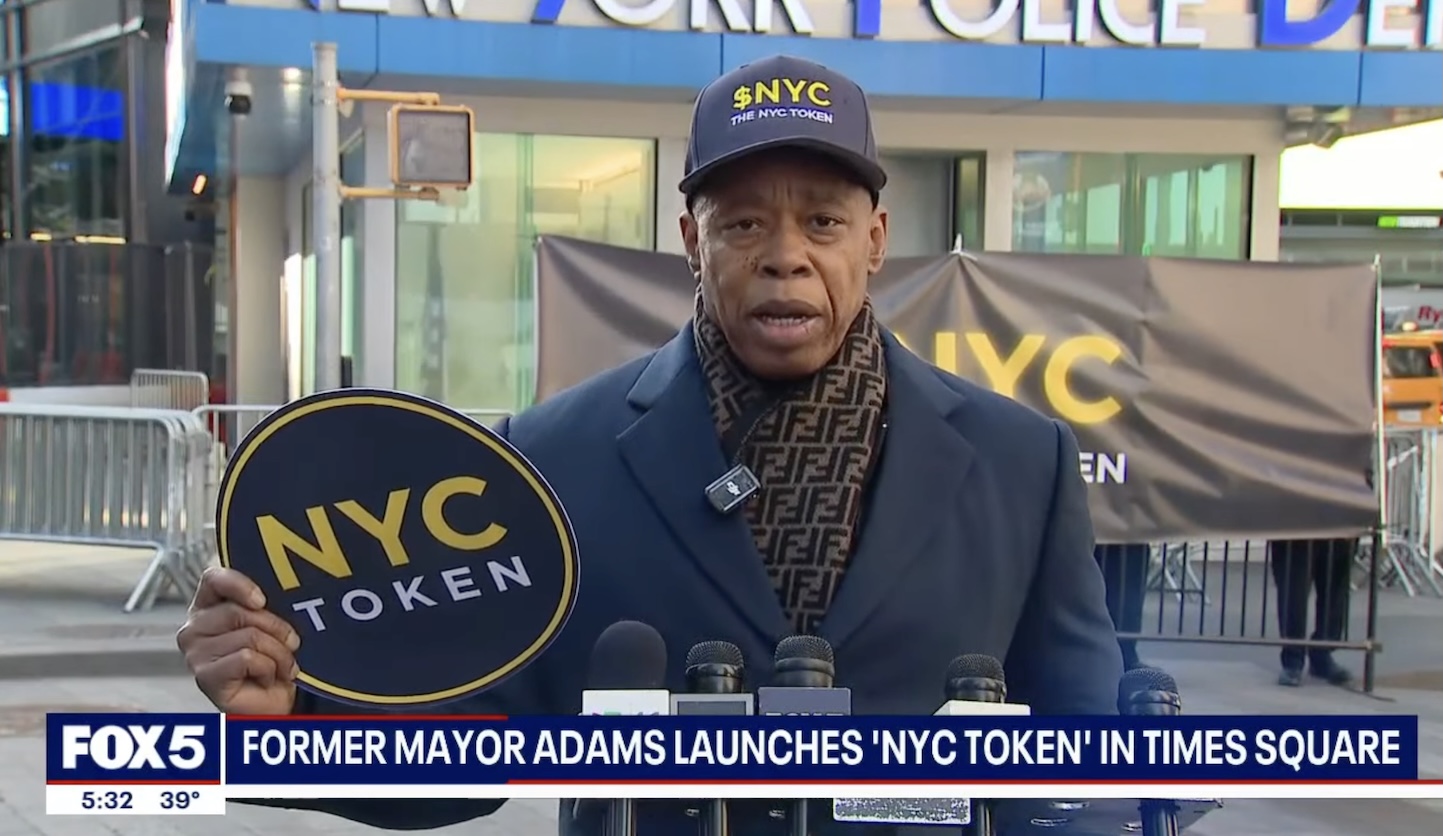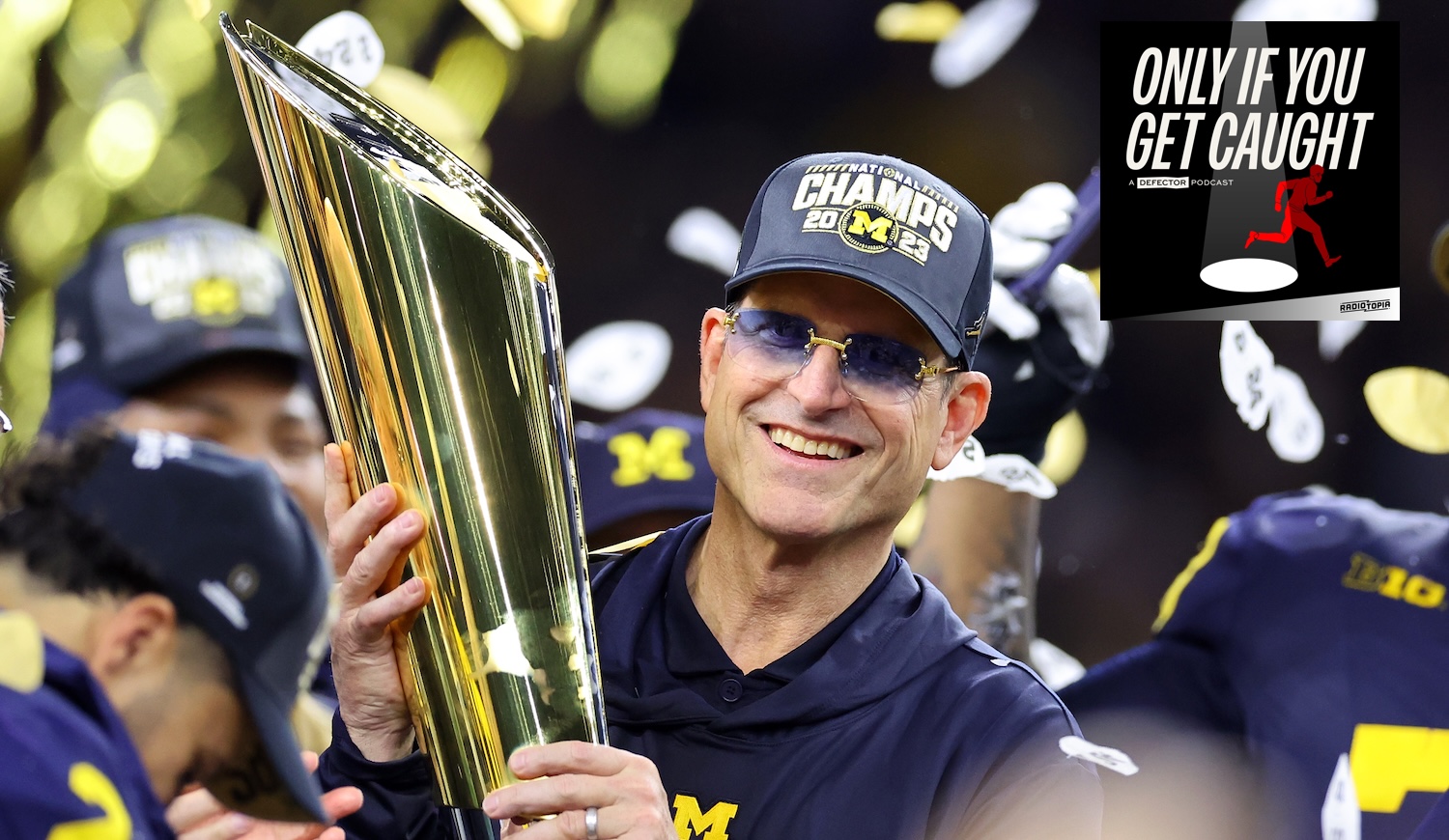The beginning of the Big Ten’s uncanceled fall football season was so in character you could almost forget the months of turmoil that preceded it. Illinois fumbled on its opening drive Friday night and on the next possession, Wisconsin’s young wonder of a quarterback swung a 10-yard touchdown pass to a fullback named Mason Stokke, pronounced like “stocky,” before the teams exchanged a few punts.
If there were a season to abandon Big Ten fandom, this would be it, but old perversions die hard. Just as the leaves on my street in Ann Arbor turned an affecting shade of orange, my hopes for this year’s Michigan Wolverines began the usual preseason toggling between visions of the Heisman and immobilizing despair at the state of the secondary. This ritual feels inane in a normal year, so it felt especially inane this year. The season preview magazine published by the indie Michigan sports site MGoBlog began with a dedication to everyone who has died from COVID-19. I studied its various depth chart projections to prep for Saturday and a myocarditis-afflicted heart thumped, arrhythmically, beneath the floorboards.
Michigan beat Minnesota on Saturday and will now host Michigan State in Ann Arbor this weekend. It's a game that has East Lansing Mayor Aaron Stephens worried, not because of the Spartans' run game, but because the rivalry matchup is traditionally the social event (read: germiest) of the season for both schools' students, and this year it happens to fall on Halloween. "I can tell you that’s the one that’s keeping me up at night right now," he told the Washington Post.
Stephens is one of 11 mayors of Big Ten towns who sent a painfully earnest letter to the conference last week requesting that they “please include the communities where you will be holding games in your conversations.” Among their asks, all made "humbly," were fewer night games (which they link to increased social activity) and that the Big Ten work with city authorities to identify a standard population positivity rate at which games would not be played in places experiencing bad COVID outbreaks. The mayors were careful to cloak these totally reasonable requests in gratitude. “We are proud to have vibrant college sports programs in our communities,” the letter reads. "These programs help increase tourism and development, drive business revenues up and foster a sense of community far beyond the universities in which they are associated."
No need to spell it out. The Midwestern affection for Big Ten football is obvious enough to have been exploited already in desperate and public ways. Even the worst, dumbest people alive grasp this statistical truth: The voters who swung Michigan, Wisconsin and Pennsylvania red in the last election are so small in number that they could all take in a game at the Big House, and some of them probably have. That is why Donald Trump bragged about securing the Big Ten’s return (which he did not actually do) in the first debate, his rare reference to a thing that exists offline. It is why 27-year-old College Republican Charlie Kirk, on his podcast in August, invoked Ann Arbor to make the fascinating if totally bogus claim that many of us in college towns, so accustomed to gathering for gamedays, would kill ourselves in football’s absence.
But football is only the most visible part of a much knottier relationship between a university and the people around it, a relationship that's come under strain lately. The residents of Ann Arbor might depend on Michigan's athletic department for business revenue or community or sole reason to live, but they also expect other more important things from the university. Namely, that it make decisions with the gravity befitting its role as force around which much of Ann Arbor orbits, and that it protect and account for the tens of thousands of young adults it brings to town.
Michigan hasn't done either this year. Rather than implement the kind of robust asymptomatic testing regime experts say is necessary to re-open a campus safely—the kind being managed with success at fellow flagship Illinois—the school re-opened with a small opt-in testing program and ill-conceived enforcement strategies. Students and faculty were invited to join roving bands of snitches—er, “Michigan Ambassadors”—to patrol neighborhoods for rule violators alongside armed police officers, a program quickly shuttered. Even before classes began, the re-opening policies were exposed as haphazard and arbitrary, and the university's messaging was exposed as flippant and disinterested.
We’ve seen the pictures. Know the facts:
— University of Michigan (@UMich) August 27, 2020
⁃Masks MUST be worn on campus
⁃Outdoor gatherings are limited to 25
-Indoor gatherings are limited to 10
⁃Masks are not required for members of the same household
Have concerns? Call 734-647-3000 pic.twitter.com/CwRwvuohHd
A pandemic reveals the distinction between town and gown to be porous. Everyone here relies on the same social services, and everyone here breathes the same air. Ann Arbor Public Schools factored rising county case levels—60 percent of the county's cases are university-related—into the district's decision to keep schooling remote for the semester. The Washtenaw County Health Department, in a clear sign the University's plan had failed, stepped in to issue a stay-at-home order for undergraduates last week, warning that daily case rates "far exceeded maximum indicator thresholds for risk to the community."
While there's been no recorded transmission between Michigan students and other populations in the county yet, not every college town in the Midwest has been so lucky. An infection cluster at the University of Wisconsin-La Crosse in September appeared to spread to local nursing homes, where 19 have died since students returned to the area. Paraic Kenny, a geneticist using RNA sequencing to map the spread of the disease, called the situation in La Crosse "completely, completely, completely predictable." The habits of 18- to 24-year-olds should not have been unknown to administrators who invited students back.
If that's true, why did Michigan attempt a residential semester at all? Money is the answer, but to hear university president Mark Schlissel tell it, it was because the Michigan community could be trusted to do better. “I get a little insulted when everybody says there’s no way that students are going to wear masks, and there’s no way that they’re not going to party in dangerous fashions, and there’s no way they’re mature enough to recognize the importance of the moment and behave like the adults that you all are,” Schlissel told the campus newspaper in August. “And I disagree with that. I think you can and will step up as a community.” (That is misplaced institutional pride only a Michigan Man could muster.)
As university workers pointed out, a public health strategy reliant on perfect compliance is hardly a strategy. In September, graduate student employees went on strike to demand remote work options and a stronger testing and contact tracing system. Resident assistants and dining hall workers joined them. To force them back to work, the university sought a court injunction. The very next day, the Big Ten announced its return to play, having adopted "significant medical protocols including daily antigen testing, enhanced cardiac screening and an enhanced data-driven approach when making decisions about practice/competition."
It’s probably of little consolation to the graduate employees that they were right about everything. Since the strike ended, quarantine and isolation housing has filled up at a rate Michigan's chief health officer called "not sustainable." Lack of support and supplies for students in quarantine housing has been cited as disincentive to participate in the university's testing program; the burden has instead fallen to local urgent care facilities. Sloppy campus re-opening presents the classic externality problem: The county's stay-at-home order mentioned the cases were "overwhelming" the health department's ability to "address the COVID-19 pandemic and other critical public health mandates."
The order raises its own share of questions. Enough exceptions are carved out to render it not much more than an anti-partying ordinance, which feels a little akin to, say, a law setting the drinking age at 21. The exemption for a certain several dozen Michigan students traveling to Minnesota a few days later raised some eyebrows, too.
Here is the official wording from the Washtenaw County Health Department. Story coming. pic.twitter.com/BQ9RhCE5WP
— Zach Shaw (@_ZachShaw) October 20, 2020
Read one way, this is the athletic department flouting safety guidelines. Read the unsettling but maybe more accurate way, this is the consequence of a bizarro moment in which the athletic department is operating more functionally than the rest of the school. For athletes, the University agreed to a strict surveillance testing program it has told other students and workers on campus is unnecessary. Incompetence is a big part of this story, but so is canniness. Michigan knows itself to be subject to vastly different sets of public and institutional pressures in dealing with each group. So long as there is no 14-school consortium holding its members accountable for their treatment of dishwashers and so long as schools will only be scrutinized on one front, any university can get away with the double standard.
Scarcity is not such a compelling argument. Other universities have made investments in widespread testing, and for a school as well-resourced as Michigan, testing one group needn't come at the expense of another. But in the leadership vacuum, myopia inevitably reigns. And so I resent the undergrad for partying; the undergrad resents the wide receiver for access to a daily rapid test. Everyone goes on hating each other, which leaves no time to ask what’s really to blame for the circumstances. The truth is that the football player, the grad instructor, the biology major, and the townie alike are living at the whims of a shared threat in higher education’s cynicism. That public universities are run more and more like hedge funds or property management companies, with no obligation to the public is the reason football is back, the reason rents and tuition fees outweigh student well-being, and the reason Michigan doesn't really care if anyone else in town pays the price for its recklessness.






